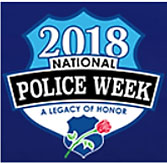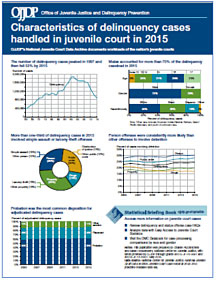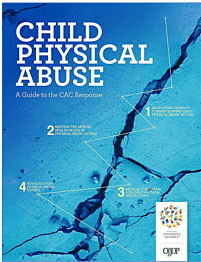Administrator Harp To Address Big Brothers Big Sisters of America National Conference
On June 25–29, 2018, more than 800 attendees—including affiliate leaders and staff members from around the country—will gather in St. Louis, MO, for the Big Brothers Big Sisters of America (BBBSA) national conference. Administrator Harp will discuss the power of mentorship in changing the trajectory of a child's life, and share her priorities and vision for OJJDP. Ms. Harp will also discuss OJJDP's support for BBBSA's one-to-one mentoring program, Bigs in Blue, which connects police with youth and works to increase understanding and build trust within communities. BBBSA currently administers grants from OJJDP to 69 of its affiliates.
Administrator Harp To Offer Remarks at Probation and Parole Association Training
On July 30, 2018, Administrator Harp will deliver remarks at the American Probation and Parole Association's (APPA's) 43rd Annual Training Institute. The institute—with the support of OJJDP's Juvenile Community Supervision Improvement program, the Council of State Governments Justice Center, and the Robert F. Kennedy National Resource Center on Juvenile Justice—will feature a symposium on the future of juvenile community supervision.
Administrator Harp will highlight the importance of ensuring that community supervision services are research based, age appropriate, and focused on public safety, while holding youth accountable and promoting positive youth outcomes. Dr. TeNeane Bradford, OJJDP’s Associate Administrator of the Core Protections Division, will also be on hand for a special guest report out to APPA’s Juvenile Justice Committee. She will speak about the Office’s work on state compliance with the core requirements of the Juvenile Justice and Delinquency Prevention Act, and consolidation of the agency’s Title II Formula Grants Program work into the State Relations and Assistance Division.
OJJDP staff will also lead three workshops that will review the current state of the field and offer suggestions for improving operations and outcomes. The workshops are Envisioning the Future of Juvenile Community Supervision; The Future of Juvenile Community Supervision: Supervision Conditions, Monitoring, and Accountability; and The Future of Juvenile Community Supervision: Probation and Parole Officers as Agents of Positive Youth Behavior Change. Register to attend the institute.
Officer Service and Sacrifice Honored During National Police Week
 Each year, the nation observes May 15 as Peace Officers Memorial Day, and the week in which that day falls is designated as National Police Week. OJJDP is committed to supporting programs, initiatives, and research that foster positive police-youth relationships and enhance law enforcement efforts to address and prevent youth victimization and violence. OJJDP has sponsored publications to support and guide law enforcement on reducing youth violence and improving police-youth interactions, including A Law Enforcement Official's Guide to the OJJDP Comprehensive Gang Model and Notes From the Research on Interactions Between Law Enforcement and Youth Discussion.
Each year, the nation observes May 15 as Peace Officers Memorial Day, and the week in which that day falls is designated as National Police Week. OJJDP is committed to supporting programs, initiatives, and research that foster positive police-youth relationships and enhance law enforcement efforts to address and prevent youth victimization and violence. OJJDP has sponsored publications to support and guide law enforcement on reducing youth violence and improving police-youth interactions, including A Law Enforcement Official's Guide to the OJJDP Comprehensive Gang Model and Notes From the Research on Interactions Between Law Enforcement and Youth Discussion.
According to FBI statistics, 93 law enforcement officers were killed in line-of-duty incidents in 2017—46 as a result of felonious acts and 47 in accidents. This represents a 21-percent decrease from 2016, when 118 officers died in line-of-duty incidents, "While we are inexpressibly grateful to have had a decrease in the number of officers killed in the line-of-duty last year, the number is still far too high," said Attorney General Sessions. "At the Department of Justice, we honor the memories of the fallen and we pray for their families."
Office of Justice Programs Principal Deputy Assistant Attorney General Alan R. Hanson echoed this sentiment in his blog, Backing the Blue. "Again and again, our law enforcement officers have shown themselves willing to stand in the line of fire to protect others," wrote Mr. Hanson. "We are grateful."
OJJDP Hosts Workshops To Assist Juvenile Drug Treatment Courts
On May 30–June 2, 2018, the National Association of Drug Court Professionals (NADCP) held its annual training conference in Houston, TX. More than 5,000 drug treatment court professionals participated in the program offerings.
OJJDP, NADCP, American University's Justice Program Office, and the National Council of Juvenile and Family Court Judges presented the OJJDP Juvenile Drug Treatment Court Guidelines (JDTC) Workshop/Kids Matter: Juvenile Drug Treatment Court Workshop, which provided an overview of the seven objectives of OJJDP's Juvenile Drug Treatment Court Guidelines. "Doing the Right Things, For the Right Kids, For the Right Reasons" dealt with the philosophy and eligibility criteria behind the guidelines. "The Heart and Soul of Juvenile Drug Court" delved into engaging the full JDTC team, assessing needs and planning treatment, and managing cases and contingencies. "The Path to Healthy Adolescent Development and Family Functioning" discussed referring participants for treatment, services, and healthy connections; and monitoring and tracking program completion and termination outcomes.
Congress allocated $95 million to the Justice Department to support drug courts. Two of the conference sessions—the "Federal Funders Forum," and "Grant Writing Made Easy"—focused on writing grant applications for the department.
OJJDP Releases New Juvenile Court Data Resources
 OJJDP sponsors the National Juvenile Court Data Archive to collect and analyze data contributions from juvenile courts across the nation. Detailed information about delinquency and petitioned status offense cases processed in juvenile courts has been updated through 2015 on OJJDP's Statistical Briefing Book.
OJJDP sponsors the National Juvenile Court Data Archive to collect and analyze data contributions from juvenile courts across the nation. Detailed information about delinquency and petitioned status offense cases processed in juvenile courts has been updated through 2015 on OJJDP's Statistical Briefing Book.
Following are the latest developments:
- According to the data snapshot Characteristics of Delinquency Cases Handled in Juvenile Court in 2015, the number of delinquency cases peaked in 1997, then fell 53 percent by 2015.
- OJJDP recently updated three data analysis tools. Easy Access to Juvenile Court Statistics helps users analyze national estimates of delinquency cases based on age, gender, race, referral offense, use of detention, adjudication, and case disposition. Easy Access to State and County Juvenile Court Case Counts provides users with quick access to state and county juvenile court case counts for delinquency, status offenses, and dependency cases. The National DMC Databook allows users to review levels of disproportionate minority contact at various stages of juvenile justice system processing using national-level data sources.
- Frequently Asked Questions (FAQs) About Juveniles in Court provides the latest answers on trends in the delinquency and petitioned status offense cases that the nation's juvenile courts handled and case processing characteristics—including decisions related to detention, intake, adjudication, and judicial disposition. FAQs on Juveniles on Probation provides information about how courts use probation and the number and characteristics of cases that receive a probation disposition.
Additional information on OJJDP research and statistics is available online.
OJJDP Hosts Session on Dual System Youth
Child welfare and juvenile justice systems now recognize that youth involved in both systems (i.e., dual system youth) are a vulnerable population who often go unrecognized because of challenges in information sharing and cross-system collaboration. The OJJDP-funded Design Study of Dual System Youth examines this population.
On May 1, 2018, Denise Herz, Ph.D., and Carly B. Dierkhising, Ph.D., from California State University, Los Angeles presented their study to Office of Justice Programs (OJP) and OJJDP staff members as part of OJP's "Lunch and Learn" series.
The first goal of the study is to propose a research method to generate a national estimate of dual system youth, the trajectories leading to multiple system involvement, and the key characteristics of this population. Extensive analysis of "linked" data from child welfare and juvenile justice administrative records from three study sites—Cook County, IL; Cuyahoga County, OH; and New York City—largely informed this portion of the study.
The second study goal is to identify successes and challenges associated with cross-system collaboration and data integration in jurisdictions across the nation and to design a method to collect and report such information in a consistent way. This goal has been advanced through close examination of the documentation and data that more than 40 sites participating in the Crossover Youth Practice Model provided. The researchers are developing a method to assist jurisdictions in assessing the degree to which best practices are being implemented to identify dual system youth and provide cross-system collaboration in service delivery. A final technical report will be available at the end of the year.
OJJDP-Supported Guide for Children's Advocacy Centers Now Available
 With support from OJJDP, the National Children's Alliance (NCA) has published Child Physical Abuse: A Guide to the CAC Response. According to the guide, children's advocacy centers (CACs) serve more victims of child sexual abuse than victims of child physical abuse, even though physical abuse is far more common. CACs without a specialized response to physical abuse may be unequipped to serve a potentially large population of child victims of physical abuse in their jurisdictions.
With support from OJJDP, the National Children's Alliance (NCA) has published Child Physical Abuse: A Guide to the CAC Response. According to the guide, children's advocacy centers (CACs) serve more victims of child sexual abuse than victims of child physical abuse, even though physical abuse is far more common. CACs without a specialized response to physical abuse may be unequipped to serve a potentially large population of child victims of physical abuse in their jurisdictions.
NCA convened a workgroup on CACs delivering evidence-based interventions to meet the specific needs of physical abuse victims, and this guide presents their considerations, tips, and resources. Although an interdisciplinary understanding of the roles each provider plays in serving child victims of physical abuse is necessary, the content is divided into four sections covering distinct disciplines:
- Developing capacity to serve abuse victims.
- Meeting the mental health needs of victims.
- Medically evaluating, recognizing, and reporting child abuse cases.
- Advocating for physical abuse victims.
View and download the guide.
